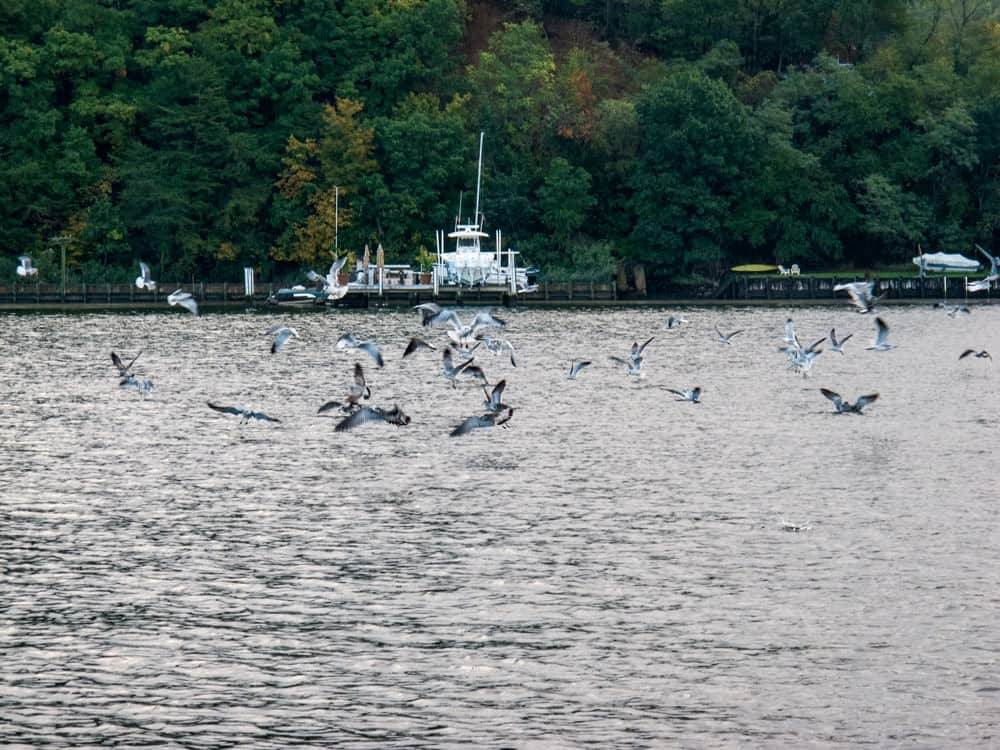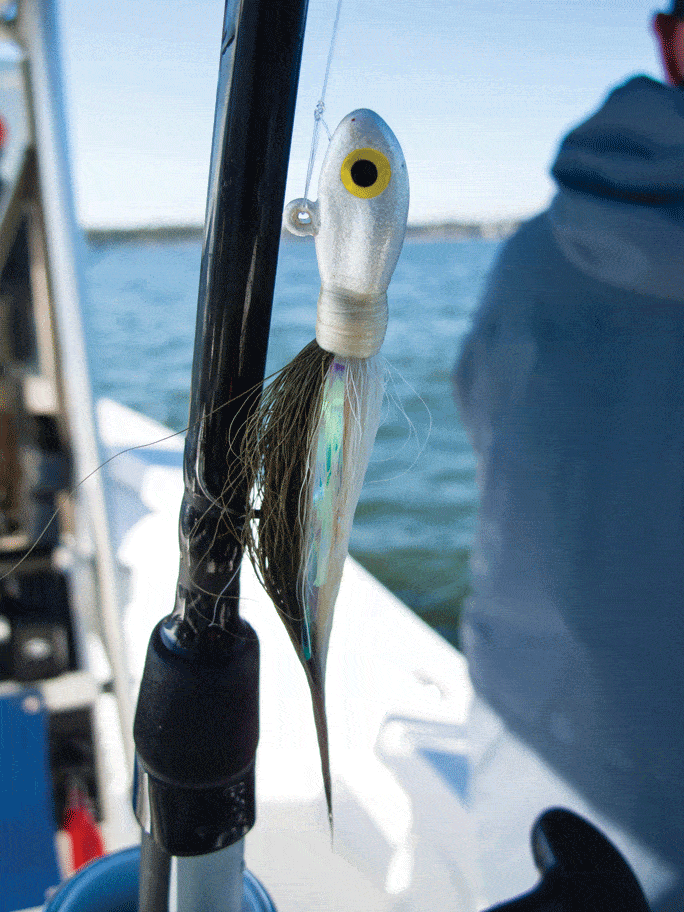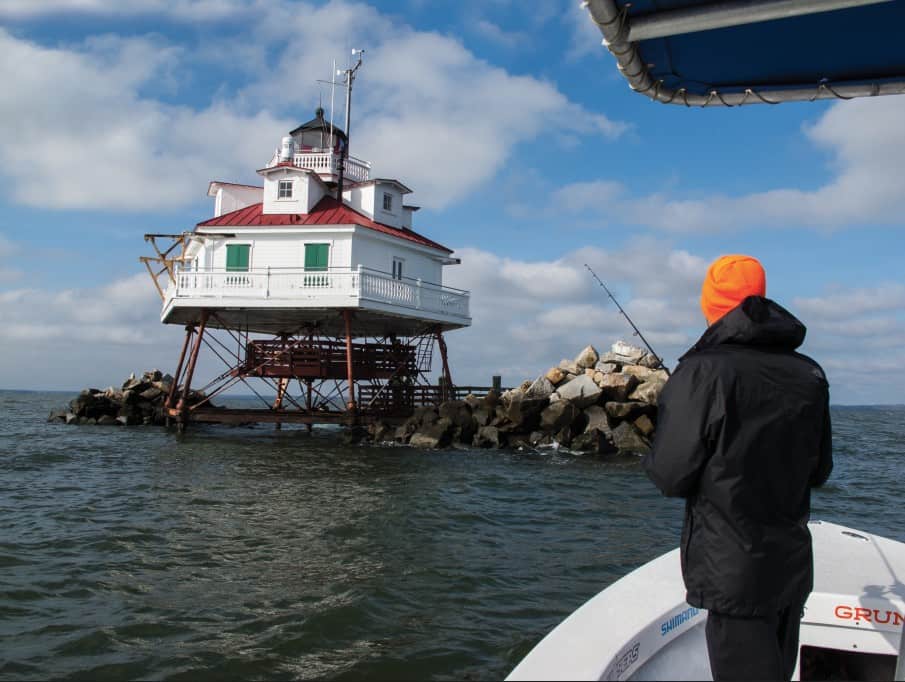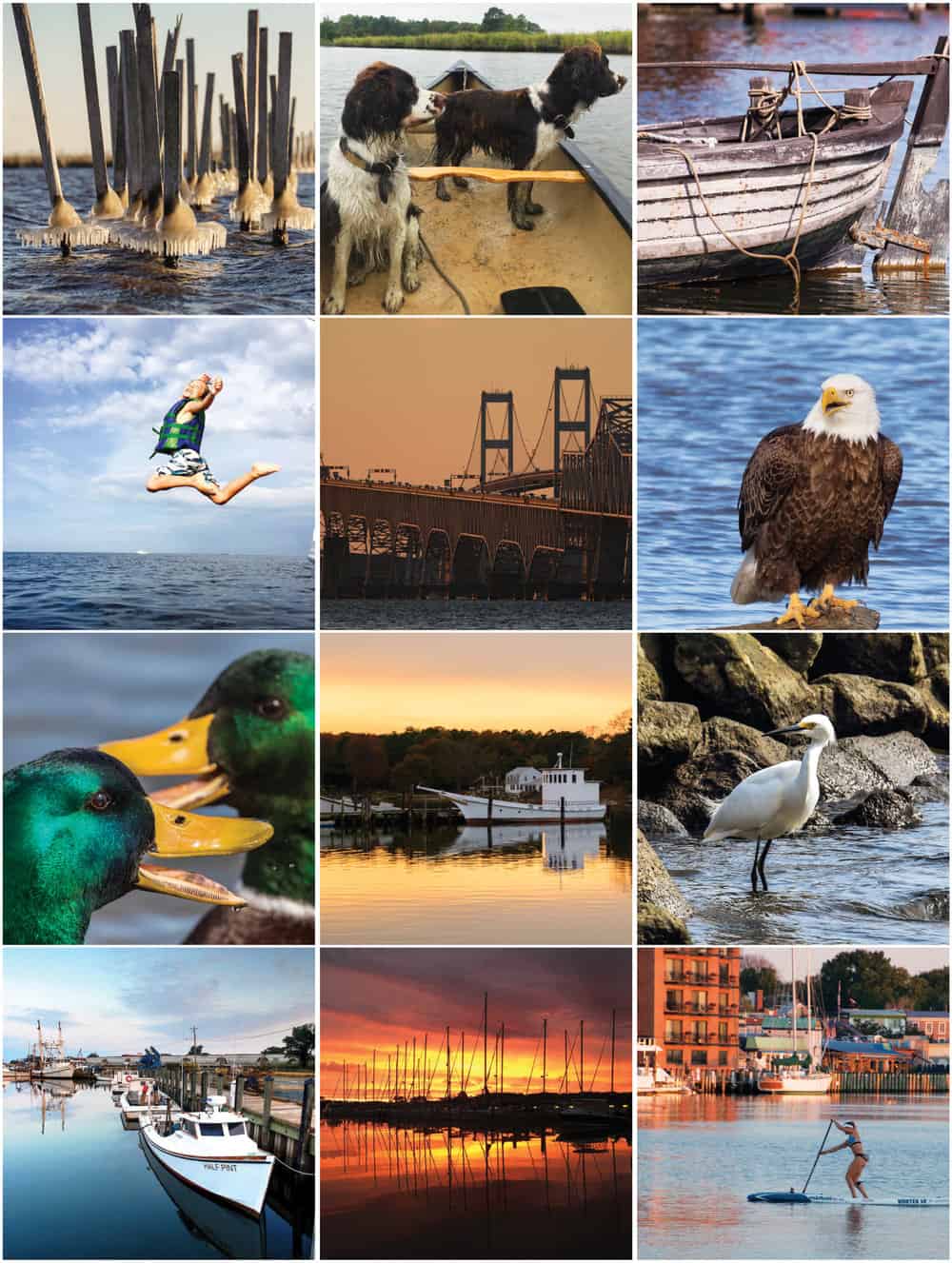A report from a half-day introduction to the pursuit.
Coming into this writing assignment, I was vaguely aware of the differences between the classic Chesapeake-style charter fishing experience and the burgeoning light-tackle fishing endeavor.
In the time-honored charter-boat trip model, you gather your friends and plenty of beer for an adventure aboard a substantial vessel that is fully-rigged and set up for a hosted trip by professionals (usually a captain and a mate) who will take you to the likely hot-spots, rig and set-up the lines for trolling or maybe some simple “bottom fishing”, and they will standby to coach you in the process of reeling in whatever might bite. The captain and crew set the agenda and do the work to provide a good time on the water. The light-tackle enterprise scales things down and puts the process in the angler’s hands in a test to discover if you can work it out on your own. The classic approach comes with a high expectation of success. The light-tackle approach, I discovered, maybe not so much, since it puts much more of the burden on the amateur, such as me.

For my intro to the light-tackle adventure, I was to be guided by Captain Tom Weaver, a light-tackle guide with some 40 years’ experience, and Captain Joe Evans, Chesapeake Bay Magazine editor in chief and a former Orvis-endorsed guide who was along to fish and take photos. The word on the street was that these were pretty good practitioners to show me the ropes, which was critical since I was starting from scratch.
For the first half-hour of our foray, I was more concerned about accidentally hooking one of my hosts than a fish. Weaver showed me, in two swift and elegant motions, how to flip the bail on the reel and then fling the artificial bait 50 or so feet into a likely fish-holding spot. It’s not as easy as it looks.
The lesson took place in the low light of dawn, so I felt that my first casts should be more safety and morale conscious than fish-focused. I moved to the opposite side of Weaver’s 23-foot skiff to obscure my feeble casting attempts. My first casts came up short and fell about 45 degrees off of the target area. Weaver and Evans left me alone for a while to work it out.
I was beginning to get a feel for it when Weaver spotted some seagulls swirling over a patch of distant water, which indicated predator fish feeding on small forage fish on the surface. Without much warning, Weaver punched the engine in gear to race to the spot. As we zipped up the Severn River, Evans advised me to get ready and to drop the bait in the middle of the feeding gulls, which made me slightly uncomfortable as I felt that the chances of catching a gull were more likely than catching a fish, and that’s not something I want to write about. After a few casts, I felt a significant tug at the end of my line. “I’ve got a big one here boys!” I yelled with maybe a little too much enthusiasm. “It has to be at least three feet long,” I may have muttered as I furiously reeled the fish in. Weaver reached over the rail and pulled out the juvenile six-inch striped bass (rockfish) for the camera. Seeing the fish there in Weaver’s hand was a proud moment for me, and I felt the need to do it again.
We took a minute to talk about appropriate lures for the chase. I learned that it’s best to start with a lure that looks and swims like something a striper is accustomed to eating. Duh… So, we were using small, white, soft-plastic baitfish imitations threaded onto steel hooks with weighted lead “jigheads” molded to look something like a minnow’s face including large, bright doll’s eyes. Yummy. The lead causes the lure to sink and swim up and down as it is reeled in. We also had rods rigged with floating “plugs” or “poppers”, which cause some commotion as they are reeled in to attract attention, as it if they are struggling baitfish, an easy mark for hungry predator fish. We tried them, but it seemed that these rockfish were too small to confront such large meals.

Despite the fact that the seagulls had led us to catch two feisty runts and a similar white perch, Weaver decided that it was time for us to move to a new location. “There’s a rule that you never leave fish to find more fish, but I break that rule at least once a day,” he said as we cruised to our next location, the Route 50 Bridge, a structure that is known to attract bigger rockfish. After just a couple of casts, I felt that now familiar resistance and I said, “I’ve definitely got something here boys!” My excitement faded into embarrassment when I heard Weaver yell back without even looking, “Yeah, it’s called a rock. You let your line sink too low before reeling it in.” So, apparently, there’s some element of finesse required.
With no luck at the bridge we turned our attention to the ships anchored out in the Bay. I learned that the tidal current will sometimes build pressure on one side of a freighter, which may provide a flowing smorgasbord of baitfish for hungry stripers to enjoy. I was gaining confidence in my casting ability, and I pinged my artificial bait off of the side of the tanker with all of the joy and enthusiasm of a fifth grader throwing pebbles at an abandoned building. We were all furiously casting as we drifted with the current alongside the ship, to no avail.

As the sun rose to its zenith, we shifted our efforts to the rocks around the Thomas Point Lighthouse. We cast the lures into the rocks to see if any fish were lurking, and they weren’t. My two captains shrugged and agreed that this just wasn’t going to be our day.
On the way in, I began to feel a warm satisfaction in learning something new and a building curiosity to know more. I asked about the gear and the cost of entry. It turns out that Weaver has organized a turn-key “Weaver Special Light-Tackle Combo” package with local tackle purveyor AllTackle.com for his clients who want to go the next step. It’s a St. Croix Triumph, six-foot, six-inch medium-fast rod paired with a Shimano-NASCI 3000 reel rigged with 15-pound, Hi-Seas braided 15-pound running line and a 20-pound fluorocarbon leader for about two-hundred dollars. Add a handful of four-inch Bloody Point shad baits ($23 for 25), some 3/8-ounce BKD jig-heads ($6 for 4) and a hat (Fish4aCure hat $25 – good cause) and you’re good to go.
“You think you got your story?” Evans asked as we pulled back into the slip.
“Yes”, I replied. “I think I’ve got something.”



